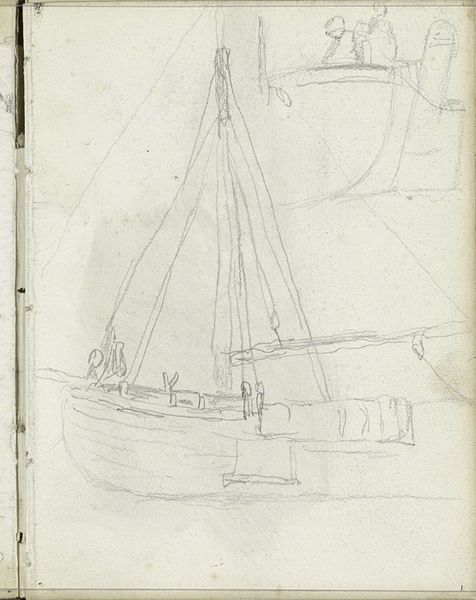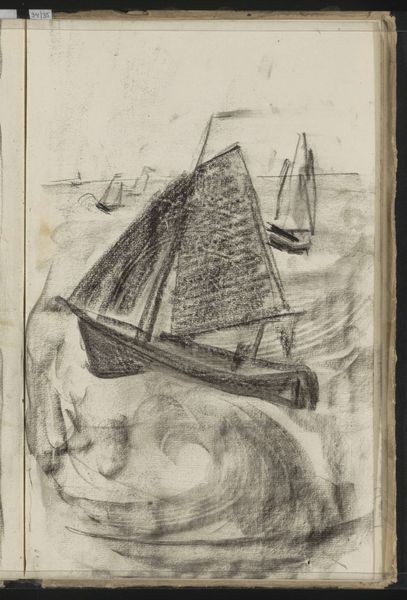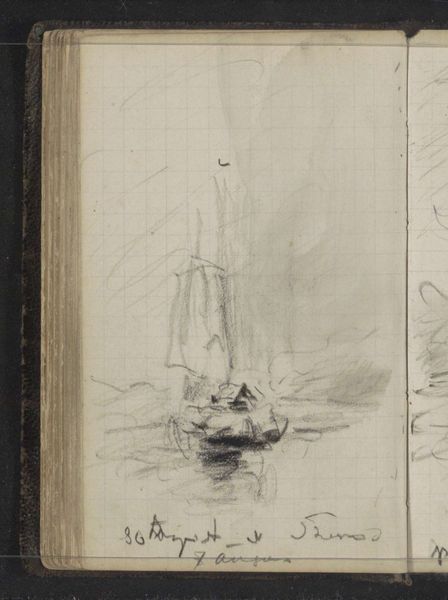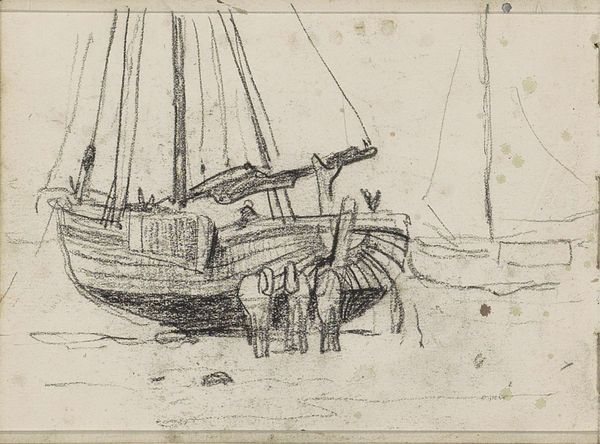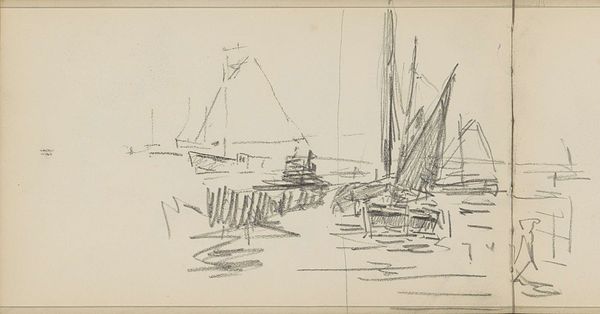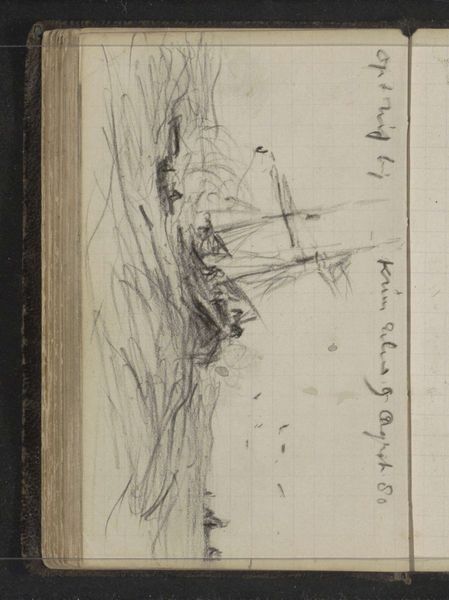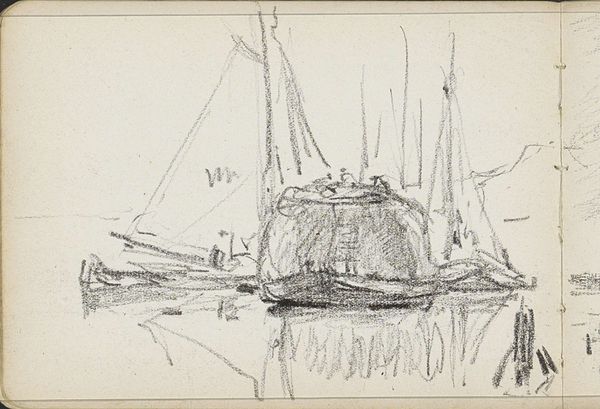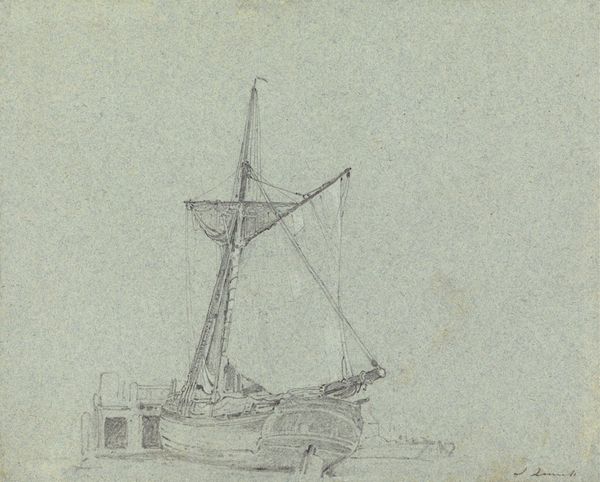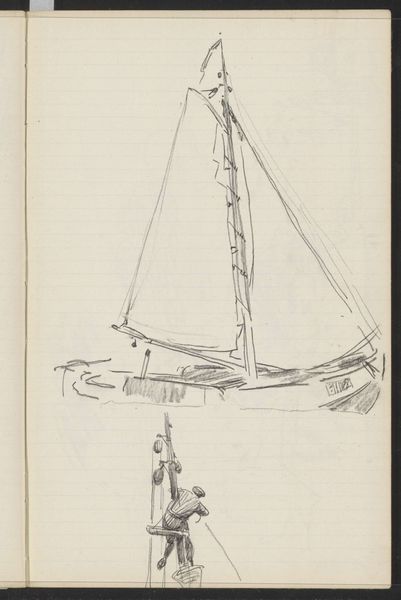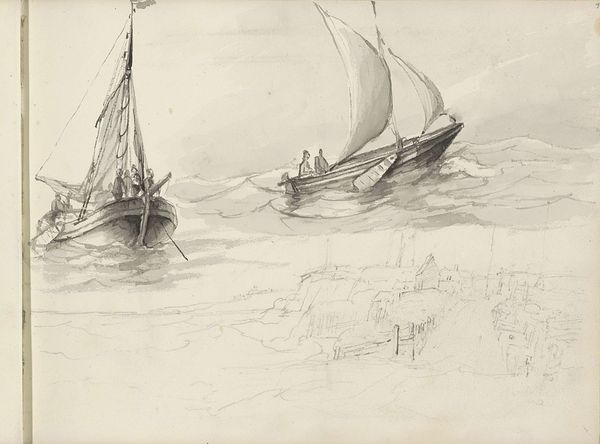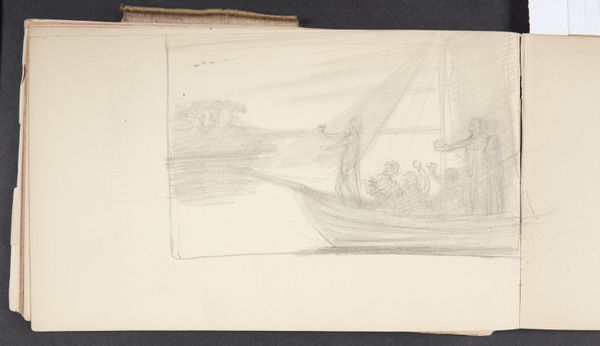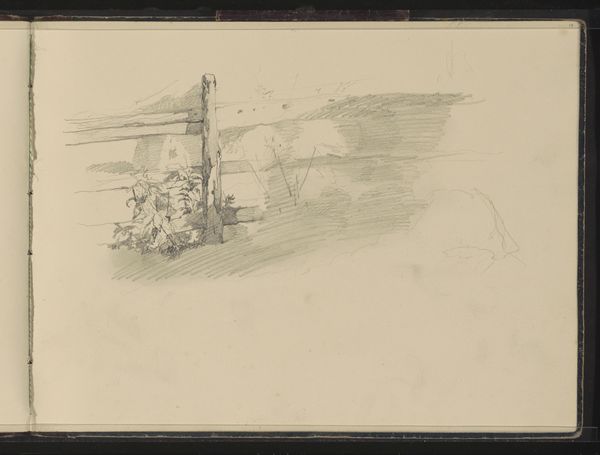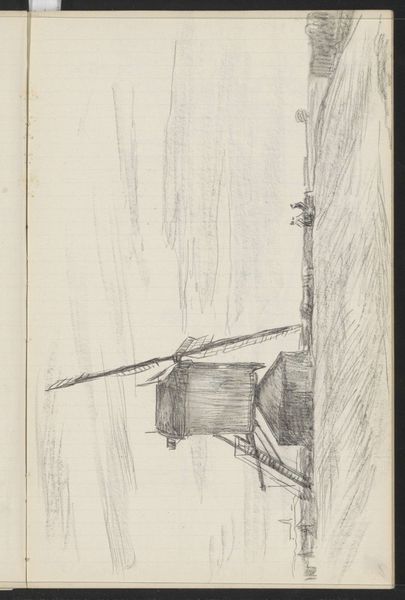
Schoener Willem Barentsz voor de kust van Nova Zembla Possibly 1880 - 1888
0:00
0:00
drawing, paper, pencil
#
drawing
#
ship
#
impressionism
#
landscape
#
paper
#
pencil
Copyright: Rijks Museum: Open Domain
Art Historian: Welcome. Before us is Louis Apol’s pencil drawing, “Schoener Willem Barentsz voor de kust van Nova Zembla,” created between 1880 and 1888. Curator: The bleakness hits me immediately. It's just...wintry. The skeletal ship is so fragile-looking against that stark backdrop. A poignant scene. Art Historian: Apol, a well-known landscape painter, captured this scene on paper. It depicts the Willem Barentsz schooner off the coast of Nova Zembla, the location of the explorer's ill-fated third voyage in 1596, a moment heavy with historical implications of Dutch exploration and scientific endeavour. Curator: I wonder about the romanticizing of that "endeavour" though. Exploration often comes hand-in-hand with exploitation, doesn’t it? I can't help but think of the indigenous populations, impacted by such voyages. Art Historian: Absolutely. Apol's work, rendered with an impressionistic touch, speaks to the evolving national narratives of the Netherlands during his time. Images such as this fuelled national pride, mythologizing the explorers but frequently overlooking the darker facets. Curator: The choice of pencil really amplifies the feeling of desolation, doesn't it? There's no gloss here. The ship appears ghostly and exposed; one could almost interpret it as a critique of reckless ambition. Was Apol perhaps subverting that heroic narrative? Art Historian: Possibly. Though he was mostly commissioned for scenes invoking romantic heroism, the delicate pencil work might suggest vulnerability amidst such perceived strength. The Rijksmuseum displaying it frames how the tale of Dutch navigation continues to be told and re-evaluated within shifting social contexts. Curator: Seeing it presented like this definitely prompts us to engage with it critically. We need to question whose perspectives were prioritised during that time, and how these stories affect our perception now. Art Historian: Indeed. It allows for critical re-assessment of national myths, moving beyond straightforward hero-worship to a more inclusive understanding of our complex past. Curator: Yes, and in doing so, perhaps give tribute not just to so-called heroes, but also to all those absent from the recorded histories. Art Historian: Well said. It seems even in a seemingly simple drawing lies an ocean of narratives waiting to be navigated.
Comments
No comments
Be the first to comment and join the conversation on the ultimate creative platform.
